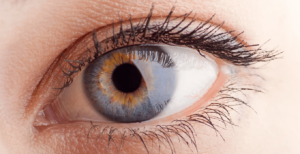Hemianopsia, also known as hemianopia, is a condition in which a person loses part of their visual field in one or both eyes. It can be caused by a range of neurological conditions, such as stroke, traumatic brain injury, or tumor. There is currently no cure for hemianopsia, but emerging trends in treatment are showing promise in improving the quality of life for those living with this condition.
One emerging trend in the treatment of hemianopsia is the use of neuroplasticity-based techniques. These techniques involve retraining the brain to compensate for the lost visual field by using specific exercises and visual training programs. One example of this is visual scanning training, where patients are taught to actively scan their visual field to compensate for the missing area.
Another trend is the use of assistive technology to improve visual function. One example of this is the use of prism glasses, which can expand the visual field by shifting the image from the blind side to the seeing side of the visual field. Another example is the use of head-mounted display systems that can project images onto the unaffected visual field to help compensate for the missing area.

Top 5 Updates on Hemianopsia
- Hemianopsia is a condition in which a person loses part of their visual field in one or both eyes. This can occur in any part of the visual field, but it is most commonly seen in the peripheral (outer) visual field.
- Hemianopsia is typically caused by damage to the optic nerve or visual pathway in the brain. This damage can be the result of a stroke, traumatic brain injury, tumor, or other neurological condition.
- The symptoms of hemianopsia can vary depending on the location and severity of the damage. Some people may only experience a mild loss of visual field, while others may have a significant loss that affects their ability to perform daily activities.
- There is currently no cure for hemianopsia, but there are treatments that can help to improve visual function. These include vision restoration therapy, low vision aids, and assistive technology such as prism glasses and head-mounted display systems.
- It is important for individuals with hemianopsia to work closely with their healthcare providers to develop a treatment plan that is tailored to their individual needs and goals. With appropriate treatment and support, many people with hemianopsia are able to adapt and continue to lead fulfilling lives.


